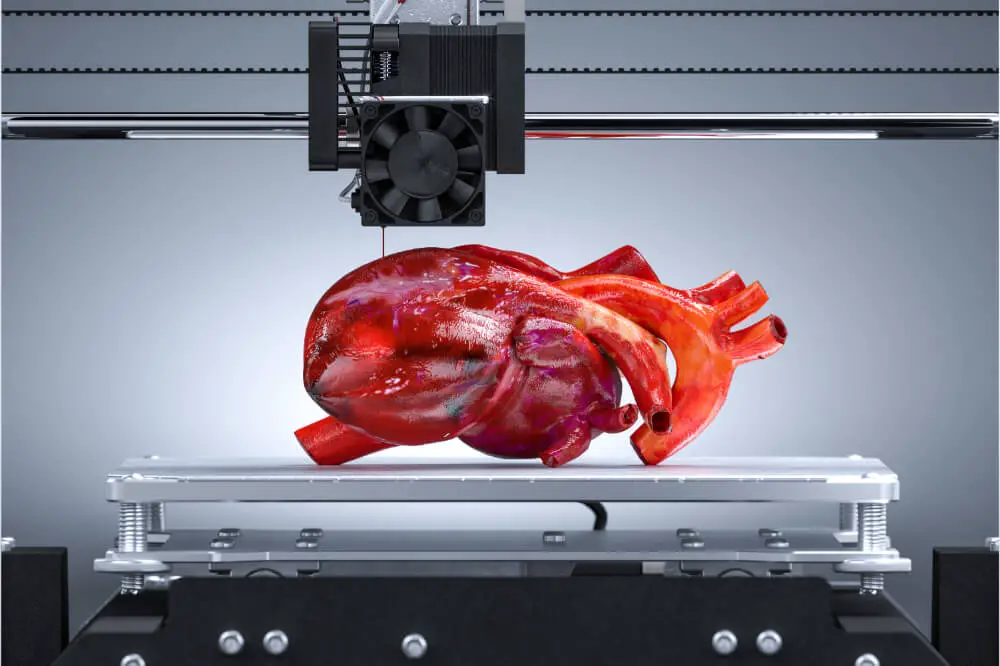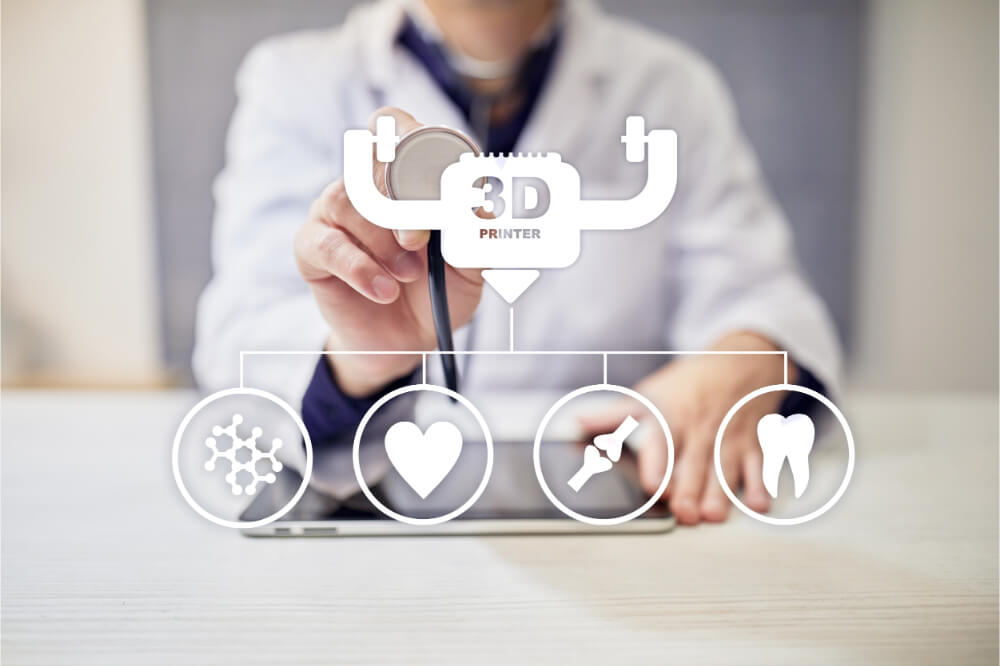Technology changes the world…
Just ask those ancient civilizations who used stone weapons against bronze and iron weapons and they will tell you how much their world changed because of advancing technology.
And we are seeing the world change as technology continues to improve different items used throughout society. Technology helps improve just about every industry and that includes the medical field as well.
To find out how the world of medicine is changing, just continue to read our article. You may be impressed by what 3D printers can do. It only takes a few minutes to get caught up on the news.
How 3D Printing Is Reshaping Medicine
The technology involved in 3D printing seems to have no boundaries. That is good news for doctors and hospitals as they can now use this technology to help them provide better medical care to their patients.
Here are a few areas that help reshape medicine so that it is better, more efficient and builds patient confidence.
#1. It helps ailing patients
No, 3D printing will not extend a life nor bring someone back from a terminal illness but it can make some ailing patients’ lives a lot easier to live. 3D printing can produce prosthetic limbs to help those people who lost an arm or a leg.
Then custom hearing aids can be produced to make sure those losing their hearing can still hear without looking like they wear hearing aids. A final example is that 3D printing can help print out dental fixtures so the dental patient doesn’t have to wait a long time to fill the holes in their mouths and eat like normal again.
#2. 3D printing helps surgeons
A surgeon facing a difficult and complicated operation can print out hearts, skulls, necks and see the patient’s physical structure before they open up the patient. With pre-operation practice, this builds patient confidence in the surgery and the surgeon helping them to relax.
Plus, the surgeon gets a first hand look at the patient’s anatomy to see what complications may arise or if there is a better way to tackle the medical issue. In other words, the surgeon gets better training so that the outcome is more positive than negative.
#3. Builds customized implants
What this technique does is help the patient receive those knee, hips, spine and other implants that are designed to specifically meet their body’s shape and condition. They are not getting a one size fits all implant, but one that works with them.
When conventional surgical techniques fail, 3D printing can develop new implants to overcome the problem that caused the conventional surgery technique to not work.
#4. Lowers the cost of medical supplies
Because the cost of printing is cheaper, the doctors and hospitals can pass that savings on to their patients. Eyeglasses, helmets, and other protective equipment printed on a 3D printer can cost a lot less than the traditional way of obtaining those objects.
Then for the savings, you get better equipment to use which offers a more perfect fit and simply works better.
#5. Prepares for future use
There is a long history to organ development or engineering but what 3D printing does is bring that field of research into the modern technological age. These devices already help replicate simple biological material like blood vessels, skin tissues, cartilage and bone, to only name a few.
3D printing is being used to see if it can replicate vital organs to help those patients who need a transplant This step is not a reality yet but medical professionals hope for the best.

What 3D Prints Out For Medical Use
Here is a list of medical items already produced by 3D printers:
- Eyeglasses
- Hearing aids
- Dental aids
- Head gear for better protection
- Prosthetic limbs- adult arms, legs, hands. Children outgrow their prosthetic limbs so they have few options
- Surgical models- these include heart, neck, skulls and other body areas
- Implants- knees, hips, bone & skull parts, spinal bone replacements, and ankle implants
It Isn’t Just The Body That Gets Help
3D printing is helping reshape medicine through the production of medical supplies. These items are in short supply through traditional methods and 3D printing comes to the rescue. Here is what those printers can make:
- Surgical masks
- Face shields
- Ventilator systems
- Swabs
- Splints
- Braces
- Heart valves
- Ears
- Bones and more
All the printer needs is the right computer file and the 3D printer should be able to make it. Of course, most biological objects need a special filament to create those items but that is already invented.
What is the hold up?
One may think that with this device everyone should open up their arms and embrace. Caution is thrown to the wind because people will be helped. It just isn’t that simple as not every 3D printed medical device is fit to be used on humans
It takes time to approve the procedures and the objects printed and the FDA has not given its approval to most of the items that are able to be printed. What the FDA has done is used their emergency use authorization format which has been granted to printed ventilators, their tubes and accessories.
The rest of the printed items need to have FDA approval in order to be used on humans. Even printed face masks need FDA approval as some samples that have been made are not as effective against Covid 19 as traditionally made masks.
Some Final Words
3D printers may be seen as a medical miracle and they certainly do fill the gap when certain supplies are needed. Also, they print up some great models so surgeons get the training they need to be more successful.
Even though not all 3D printed medical items have received approval, it is still reshaping medicine. The patient gets better care as well as improved devices that make their lives a little easier to live and relieve them of pain. What is good for the patient is good for medicine.


